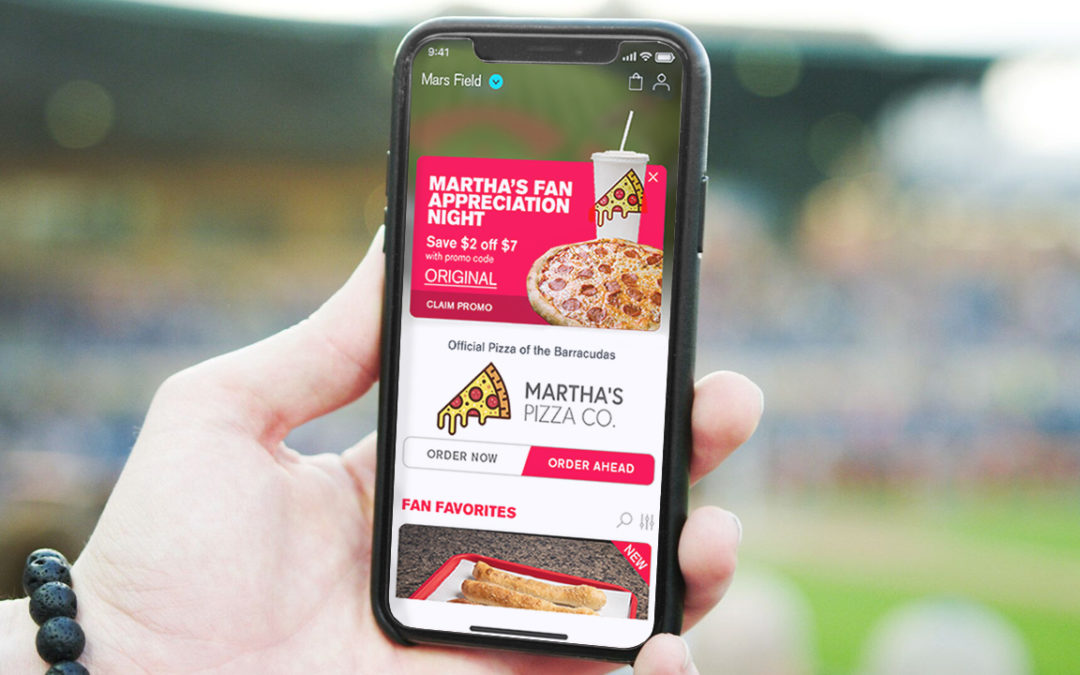Creating Value for Event Sponsors with Mobile Activation
 There’s never been a better time to reassess your sponsorship model. With COVID-19 shifting mindsets, altering consumer behaviors, and signaling limited venue capacities in our future, what proves effective in sponsorship tomorrow and beyond will likely be much different than it was just a few months ago.
Some questions worth considering for anyone involved in partnerships and activation: Have your sponsors’ goals changed? As a result, what are the most effective sponsorship assets (digital vs. traditional) to achieve those goals?
First, let’s define mobile activation. The numerous digital touch points provided through mobile devices, both app-based and online, empowers brands to deliver dynamic messaging, drive a desired action, and provide a unique experience at scale, all within a single user journey. Mobile activation quantifies the effectiveness of a campaign in reaching an advertiser’s goal, and this can directly illustrate ROI.
In pairing mobile’s capabilities and benefits to lower attendance and the anticipation of other precautionary measures at future events, mobile will emerge as a quintessential piece in any property’s revised sponsorship inventory. So, now’s the time to get ahead.
In this week’s blog, we’ll break down why mobile assets have risen to be the new favorite for hitting three main types of sponsorship goals: brand awareness, brand building and sales conversion.
There’s never been a better time to reassess your sponsorship model. With COVID-19 shifting mindsets, altering consumer behaviors, and signaling limited venue capacities in our future, what proves effective in sponsorship tomorrow and beyond will likely be much different than it was just a few months ago.
Some questions worth considering for anyone involved in partnerships and activation: Have your sponsors’ goals changed? As a result, what are the most effective sponsorship assets (digital vs. traditional) to achieve those goals?
First, let’s define mobile activation. The numerous digital touch points provided through mobile devices, both app-based and online, empowers brands to deliver dynamic messaging, drive a desired action, and provide a unique experience at scale, all within a single user journey. Mobile activation quantifies the effectiveness of a campaign in reaching an advertiser’s goal, and this can directly illustrate ROI.
In pairing mobile’s capabilities and benefits to lower attendance and the anticipation of other precautionary measures at future events, mobile will emerge as a quintessential piece in any property’s revised sponsorship inventory. So, now’s the time to get ahead.
In this week’s blog, we’ll break down why mobile assets have risen to be the new favorite for hitting three main types of sponsorship goals: brand awareness, brand building and sales conversion.
1. Mobile to increase brand awareness
Due to the very likely low attendance post pandemic (especially when venues are mandated to operate at lower capacity), impression-based assets like static signage will rapidly lose their value. With lower impressions comes higher CPM, which reduces traditional signage’s cost-effectiveness to increase brand awareness. On the flip side, the footprint of mobile can reach beyond the walls of your event. Attendees will have the opportunities to opt in to receive discounts and digital offers that arrive outside the actual event, through multiple channels including email, SMS, mobile app and social media. Another advantage of mobile activation is that it’s trackable. Data around traditionally elusive and subjective metrics — such as impressions, sentiment and level of engagement — helps you and your partner justify ad spend. By reporting metrics to your sponsors which illustrate message deliveries, views, and durations viewed, you can illustrate the value of impressions towards brand awareness. For sponsors, mobile helps them drive measurable results on their end, such as the source of site visits and (in the future) an increase in store traffic. While brand awareness has its place, it can only be considered the surface of what an effective post-COVID 19 sponsorship activation will look like, where direct ROI is of greater emphasis for advertisers.
For sponsors, mobile helps them drive measurable results on their end, such as the source of site visits and (in the future) an increase in store traffic. While brand awareness has its place, it can only be considered the surface of what an effective post-COVID 19 sponsorship activation will look like, where direct ROI is of greater emphasis for advertisers.
2. Brand building through mobile experiences
Pre-COVID fan engagement included experiential marketing activations, player appearances and VIP experiences. But again, with reduced attendance, these promotional tactics may have to be sidelined. We define “engagement” as a step-up from “impression;” not necessarily as direct as “conversion,” but essential for shaping brand preference, improving brand sentiment, and retaining customer loyalty. These goals are most popular among brands within saturated categories such as telecommunications, insurance and beverages. However, within experiential marketing, measurability is still a major concern — how many people engaged with our brand ambassadors, or how many branded bags or product samples were distributed? Quantifiable, yes, though only through manual input such as a clicker or taking inventory at the end of the night. What will experiential marketing look like in the future? Short answer: mobile. It can provide the same desired outcomes in a trackable manner (and cheaper too!).
Mobile activations from last fall’s football season by sponsors through FanFood partners Spotswood High School (VA) and West Monroe High School (LA).
Last fall, FanFood worked with several high school football programs to incorporate their local sponsors into the concession mobile ordering experience. We embedded their sponsors’ logos and messaging throughout an app user’s journey: from the welcome screen to the menu screen. As a fan at one venue enjoys the convenience of ordering food from their seats, he/she also unknowingly contributed to overall impressions and the value of an average session duration. At the end of the night, the schools could present to their sponsors the following KPIs, all easily accessible from FanFood’s Manager Portal:- New Users & Returning Users
- Total orders placed (related to time placed and order size)
- Frequency of specific items order
- Unique promo codes applied
- App sessions
- Screen views
- Average screen view duration
- Average app session duration
- Average number of sessions per user
3. Drive direct sales with mobile
What’s the ultimate goal for any sponsor? Higher sales. With the current economic climate and massive budget cuts across industries and companies, sponsors are more likely to invest in activations that result in ROI faster — meaning, generating direct sales. There’s no better way to drive up sales than on mobile, given that it’s one of the primary methods people are making purchases these days. In our recent sports fan survey, nearly 1,000 sports fans, 81% indicated they are very likely or likely to order concessions on a mobile ordering app. That’s not surprising, given that many of your fans are probably using mobile ordering for restaurant takeout and grocery deliveries now — even those using such apps for the very first time due to the quarantine. FanFood actually conducted an experiment on this. Last summer, we doubled the sales of of Mars Wrigley products in the FanFood app at the Durham Bulls Athletic Park within two months. The promotion tactics included prioritized product listing, push notifications featuring special game day savings on concessions, and paid social media advertising. Mobile sponsorship assets can provide data-driven insights for you and your sponsors. These tactics have the same measurable characteristics to that of digital advertising, but are applying specifically to increase the value of each attendee who takes part in the eventual triumphant return of professional sports.

